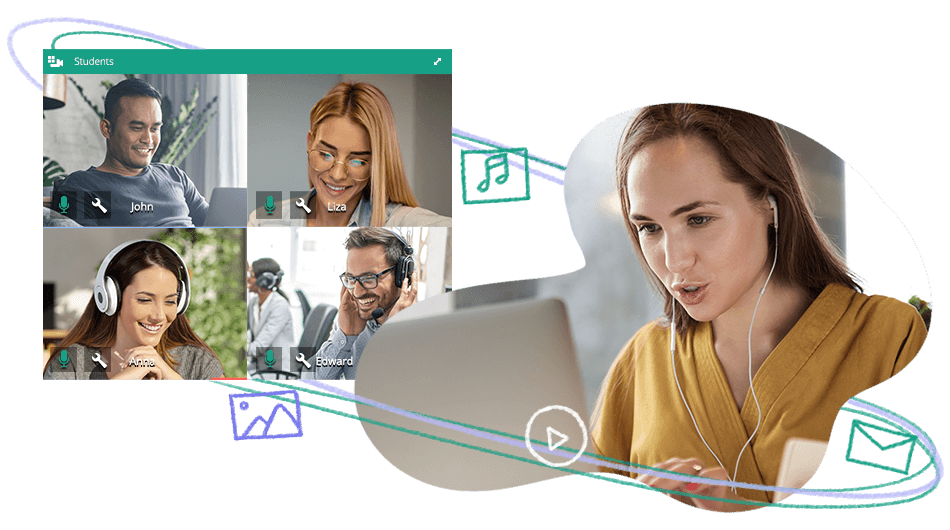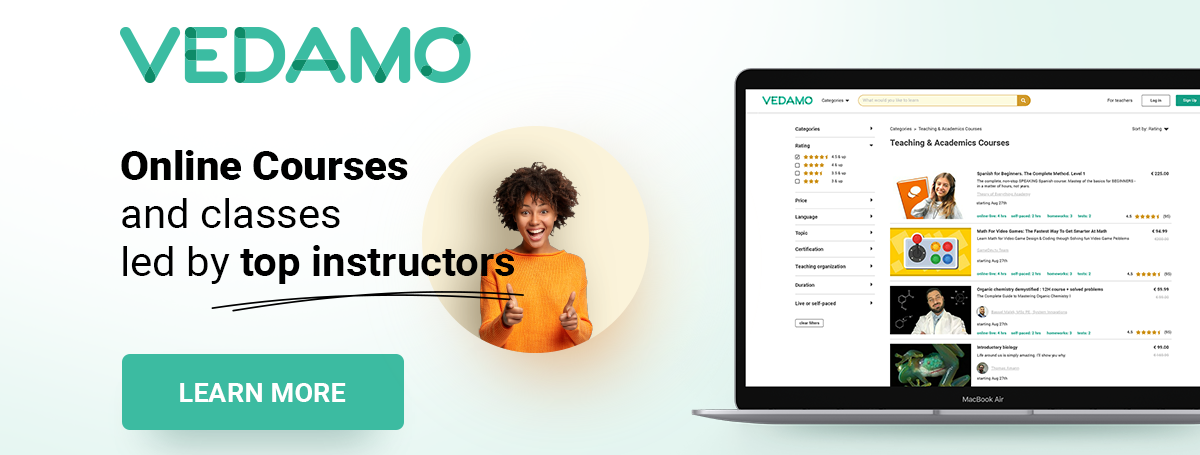Virtual learning is usually associated with online courses or online environments, but it has much broader dimensions. In this article we will discuss its definition, characteristics, and benefits. We have also made for you a list of the most common forms of virtual learning, which describe the different aspects of learning and teaching process.
Virtual Learning – meaning
Virtual learning is a learning experience that is enhanced through utilizing computers and/or the internet both outside and inside the facilities of the educational organization. The instruction most commonly takes place in an online environment. The teaching activities are carried out online whereby the teacher and learners are physically separated (in terms of place, time, or both).
We can define virtual learning as:
Distance learning conducted in a virtual learning environment with electronic study content designed for self-paced (asynchronous) or live web-conferencing (synchronous) online teaching and tutoring.
Virtual Learning – educational theories
The quality of online education depends on the proper use of digital technologies in accordance with modern educational theories:
Behaviorism
Behaviorism examines how students behave while learning. It focuses on how learners respond to certain stimuli. When the teacher repeats the stimuli, they can observe, control, and modify the learner’s individual behavior. Learners do what they are instructed to do and are only prepared to reproduce basic facts and automatically perform tasks. Behaviorism does not examine the mind or cognitive processes.
In virtual learning behaviorism can be applied through step-by-step video tutorials, game-based activities, regular and constructive feedback, quizzes, gamification, etc.
Cognitivism
Cognitivism focuses on the role of the mind and cognitive processes in learning. It explains how the brain is functioning and the levels of cognitive development that form the foundation of learning. Studies of cognitivism help educators understand how people learn and how to teach more effectively.
In virtual learning cognitivism can be applied through customizable learning environments, adaptive and personalized learning applications, AI, learning analytics, etc. It is important to provide content that is tailored to your learners’ cognitive abilities, such as text, images, multimedia, etc., in which the learners can choose how lessons are presented.
Social constructivism
Teaching and learning are explained as complex interactive social phenomena that take place between teachers and students. Learning activities focus on experience sharing, teamwork, and collaborative learning.
Social constructivism finds perfect application in group discussions, brainstorming, problem-based learning, and small group activities. A great environment for these types of activities is the virtual classroom for live online teaching with interactive tools like collaborative web-conferencing, an online whiteboard, breakout rooms, screen sharing, etc.

Virtual Learning – basic characteristics and benefits
- Remote access to an unlimited array of educational services (topics and tutors) offered worldwide
- Individualized learning process that takes into consideration the personal level of competence, individual needs, and different learning styles
- Safe and secure learning environment
- Flexible learning in terms of time, location, and pace
- Cost-effectiveness, time-effective, easily scalable… and much more
Virtual Learning – a list of related terms
Virtual learning has many forms and related terms. These seem very similar but represent different aspects of learning and teaching and can help us understand the essence of “virtual learning.” Here are the most commonly used ones:
- E-learning
E-learning in its broadest sense refers to:
Using electronic technologies for learning and teaching.
The learning activities take place either entirely or partially online. They can be conducted by means of electronic media without the use of the Internet.
- Web-based learning
Web-based learning refers to the use of a web browser for learning.
- Online learning
Online learning is associated with the provision of electronic content available on a computer/mobile device. It might involve the use of the internet, but the use of a web browser is optional.
Online learning can be done through programs or apps installed on your personal device, which can also be used offline.
- Distance learning
Distance learning does not have to use electronic and web-based technologies. It means learning from a distance; in other words, the participants are physically separated.
Distance learning is related to:
Providing instruction to a person who is learning in a place and at a time different from that of the teachers and the other learners
Nowadays, with the development of digital technologies, distance learning is increasingly associated with online learning. The use of virtual classrooms for live online teaching brings distance learning closer to the traditional form of learning by reproducing its main characteristics in the online environment.
- Blended learning
This type of learning combines virtual and traditional forms of teaching. The learning content should be digitalized and made available online. Thus, learners are able to control the learning process in terms of time, place, tempo, and method of learning.

Conclusion
Virtual learning combines all of the above-mentioned terms. It can overcome many drawbacks of the physical environment such as time, facilities, location, etc. Online environments allow teachers to work with larger numbers of students and optimize their routine tasks. Virtual learning also brings new pedagogical techniques into the traditional forms of education and makes learning more personalized and convenient.
TABLE OF CONTENT:

